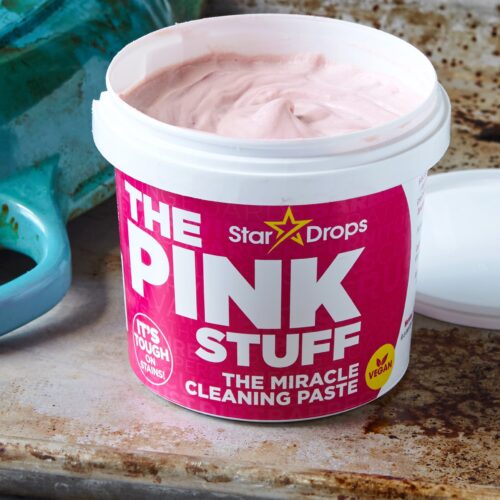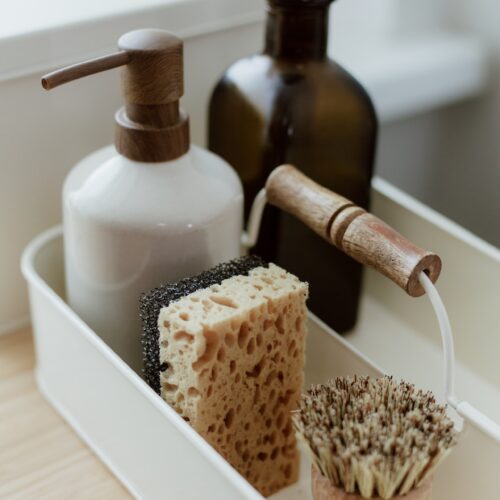
We all know that clutter can be a problem. It can make our homes feel smaller, our living spaces feel less inviting, and it can sometimes be downright overwhelming. But did you know that your cluttered home could also cost you money?
It’s no secret that Americans love to shop. According to an article from NASDAQ, the average American spends more than $1,000 per year on clothes alone. That’s a lot of money! And what do we do with all of those clothes once we’re done wearing them? We donate them, of course!
But did you know that not all your donations will help those in need? Many of your donated items end up in landfills. According to a report from EPA, approximately 85% of all textile waste in the United States is sent to landfills each year. So what can you do to ensure your donations are going to good use? Read on to find out!
Want to save this recipe? Enter your email below and we’ll send the recipe straight to your inbox!
NOTE: By saving this recipe, you agree to join our weekly recipes newsletter.
The Cost of Storage Units
One of the most apparent costs associated with clutter is the cost of storage units. If you’re paying to store items that you never use, that’s money that could be better spent elsewhere, for example: on your mortgage, on your child’s education, or even on a much-needed vacation.
The average cost of a storage unit is $85 per month, according to SpareFoot. But depending on the size of the unit and the location, that number can be much higher. For example, in New York City, the average cost of a storage unit is $422 per month!
In addition, the cost of storage units can add up over time. A small storage unit may only cost $50 per month, but if you’re keeping it for five years, that’s $3,000! And if you have multiple storage units, the costs can start to add up.
So, if you’re paying to store items you don’t use and don’t need, it’s time to get rid of them. Not only will you save money on your storage unit, but you’ll also declutter your home and make more space for the things you love.
The Opportunity Cost of Not Decluttering
Another cost associated with clutter is the opportunity cost of not decluttering. This is the idea that when we choose to keep things we don’t need or use, we miss out on other opportunities.
For example, if you have a cluttered home office, you’re not working as efficiently as you could be. And if your closets are overflowing with clothes you never wear, you’re likely spending more time and money shopping for new clothes than you would if you had a streamlined wardrobe. In other words, decluttering can save you time and money in the long run!
I know people may think you’re a drama queen saying that your cluttered home took away your opportunity for a promotion at work, but it does! Think about it: How efficient will you be at work if your home is a mess and you can’t find anything? It may seem small, but over time, the opportunity cost of not decluttering can add up.
The Emotional Cost of Clutter
A cluttered home can be stressful and overwhelming, making you feel like you’re not in control of your own life. A Princeton University Neuroscience Institute study found that physical clutter in your environment can impede your ability to focus. And another study, this one from UCLA, found that women who described their homes as “cluttered” or “disorganized” were more likely to be depressed and fatigued than women who described their homes as “restful” and “restorative.”
It’s pretty easy to understand, and I believe we all have been there at some point in our lives. If your home is cluttered and disorganized, it can be tough to find anything, leading to stress and frustration. Moreover, if you’re constantly tripping over things or moving things around to make space, that just adds to the stress.
Imagine how much better you would feel if your home was decluttered and organized. You would have more space, you would be able to find things when you need them, and you wouldn’t constantly be tripping over something or moving things around. In other words, decluttering can lead to a less stressful and enjoyable life.
So, now we all have a better understanding of some of the costs associated with clutter. But what about donating clutter? How can we make sure the donations we make are effective and efficient?
The following tips will help you make the most of your donations and ensure that your clutter is put to good use.
Only Donate Items that Are in Good Condition
This may seem like a no-brainer, but you’d be surprised at how many people try to donate items that are ripped, stained, or otherwise damaged. If an item is too damaged to be sold in a thrift store, chances are it will end up in, you guessed it, a landfill.
So, before you donate anything, take a good look at it and ask yourself if it’s something you would buy second-hand. If the answer is no, it’s not something that someone else would want either. Then the best thing to do is to recycle it or throw it away.
Do Your Research
Not all charities are created equal, and not all of them will accept the same types of donations. For example, some charities may only accept clothing, while others may accept furniture, household items, and even cars. Others may only accept donations during certain times of the year.
Therefore, it’s essential to research before you donate to be sure your donation is going to a worthy cause. By the end of the day, you don’t want to waste your time or your donations by giving to a charity that doesn’t use or need them.
Consider Alternatives to Donating Altogether
If you have items that you think someone else might be able to use but aren’t sure where or how to donate them, consider selling them instead. There are plenty of online marketplaces (like eBay, Craigslist, and even Facebook) where you can sell just about anything.
A few years ago, a friend of mine was moving and had a lot of clothes she wanted to get rid of. She took them to a consignment store and made over $500! She was able to declutter her home and make some money in the process. So, if you have items in good condition, selling them may be a better option than donating them.
Even if you don’t want to go through the hassle of listing and shipping your items, some cities even have “freecycle” groups where people can post items they want to get rid of, and others can come and pick them up for free! That’s just a win-win.
Properly Dispose of Hazardous Materials
If you have any hazardous materials, like paint, cleaning supplies, or batteries, you must dispose of them properly. You can’t just toss them in the trash or leave them out for someone to take. That’s illegal and dangerous for both people and the environment.
Instead, you’ll need to find a local hazardous waste disposal facility. You can usually find these by doing a quick Google search or checking your city’s website.
Don’t Forget the Tax Deduction
Well, yeah, of course, this one. When you donate to a qualified charitable organization, you can deduct the value of your donation from your taxes. Make sure to get a receipt from the charity and hang it onto it for your records. You may deduct the total value of your donation, or you may be able to remove a portion of it, depending on the item.
If you’re unsure how much your donation is worth, you can search for valuation guides online or ask the charity for a valuation guide. Just be sure to get this information before you donate so that you can adequately document the value of your donation.
Final Thoughts
If you’re struggling with clutter in your home, know that you’re not alone. Millions of Americans struggle with this issue every day. But what many people don’t realize is that clutter can also be a financial drain. There are hidden costs associated with having too much stuff, from storage unit costs to missed opportunities to declutter and save. So if you’re ready to declutter and simplify your life, consider donating your unwanted items to charity. It’s a great way to declutter your home, help those in need, and even get a tax deduction.
Donating unwanted items is a great way to declutter your home and help those in need. The next time you’re feeling overwhelmed by your belongings, consider donating. I bet you’ll be surprised by how good it feels to declutter your home and help others at the same time!



Leave a Reply